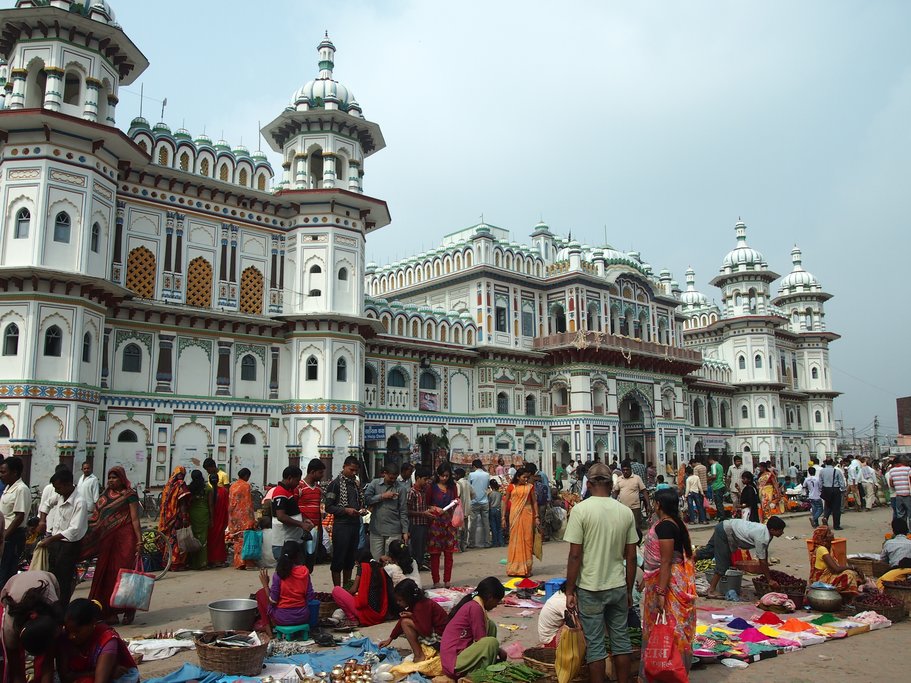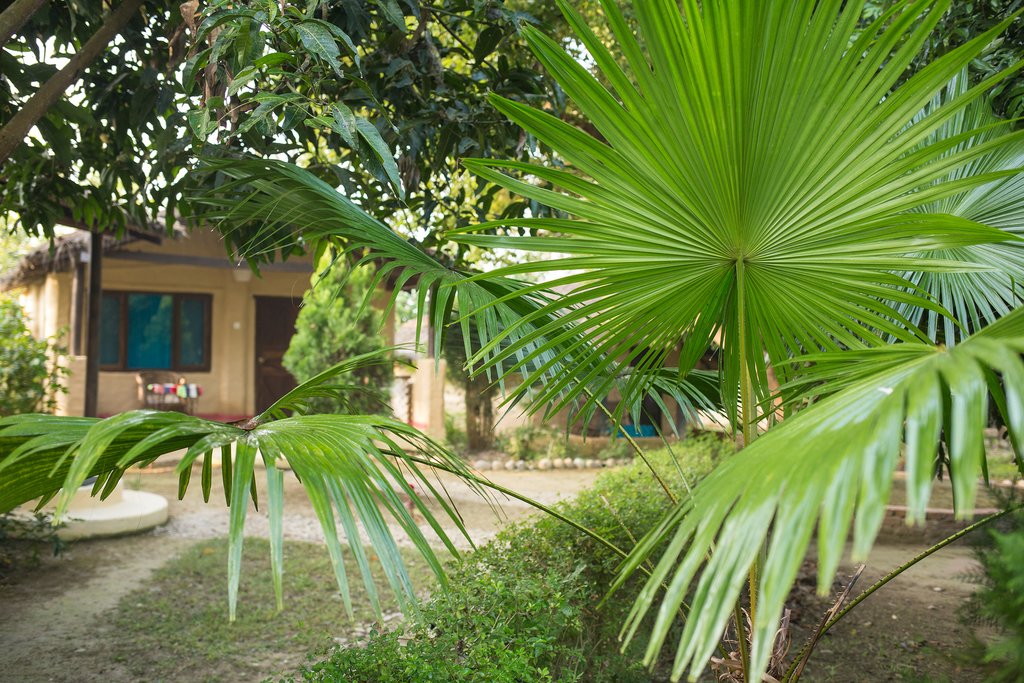Discover the Terai
From the birthplace of the Buddha to wildlife safaris and culturally vibrant towns, there's a lot to see and do on the Terai. But with the exception of Chitwan National Park, most travelers to Nepal don't know much about the region. Indeed, until the mid-20th century, the Terai was largely an area of dense forest and malarial marshes, a natural border area between the plains of North India and the hills and mountains of Nepal. But the Terai played an important role in the development of Hinduism over many centuries: kings and queens lived in and around the Nepali Terai, as well as mythological deities, according to legend.
These days, the Terai houses much of Nepal's large-scale agriculture and industry, but also some of its most impressive national parks. Read on for practical tips to help you plan your trip to the region, and check out these five unique itineraries for travel inspiration in Nepal.
Planning Your Visit

The Terai is a large area, spanning over 13,000 square miles, or nearly a quarter of Nepal. While it's possible to take a bus from Kathmandu to many of the destinations listed below, the journey is long and not particularly comfortable. Most travelers choose to fly instead to airports like Nepalganj and Biratnagar, then make connections by car or bus. Due to travel logistics, you'll want at least a week to explore the area, or longer if you plan on visiting more than one of the highlights below. Read this article for more details on how much time to spend in Nepal.
A note on safety: while there's no cause for concern in popular tourist areas like Chitwan, the political situation on the Terai can be volatile. Cities like Janakpur regularly experience political unrest which can turn to violence, so check the situation before arriving. Tourists are never targets, but travelers should avoid getting caught up in demonstrations. Learn more here about solo travel and safety on kimkim's guided trips.
When to Go
The climate of the Terai is more like that of North India than the hills and mountains of Nepal. So unless you're used to very hot weather, it's better to avoid visiting the Terai between April and October, when temperatures can soar above 100 degrees.
Since wildlife spotting in the national parks is one of the main attractions of the Terai, it's best to visit at prime animal-spotting times. Jungle animals are less active when it's hot out, so by visiting in fall and winter months (November through March), you're more likely to see tigers, rhinos, and birds in their natural habitats. This article explains why January is a great time to visit the Terai.
Getting There & Around
The Terai is connected by road and air to the rest of Nepal. Major transportation hubs are Bharatpur/Narayangadh, Nepalganj, Biratnagar, Siddharthanagar (Bhairahawa), and Janakpur. Although most travelers to Nepal fly internationally into Kathmandu, you could take the overland route from India and pass through the Terai. (The roads are generally bumpy and in poor condition, but they're not nauseatingly twisty like they can be in the mountains.)
When traveling between Kathmandu or Pokhara and the cities on the Terai, flying is by far the most comfortable option. You'll only need to spend 30 to 60 minutes in the air, instead of several hours in traffic jams and bumping over uncomfortable roads, as you would on a bus.
Chat with a local specialist who can help organize your trip.
Highlights & Activities
Chitwan National Park

Established in 1973, Chitwan was Nepal's first national park. Bordered by Parsa National Park to the east (in Nepal) and Valmiki National Park to the south (in India), the large protected area is mostly comprised of forest, grasslands, and marshes, which are home to a large number of bird species, as well as rare slender-snouted gharial crocodiles, deer, elephants, tigers, and the one-horned rhinoceros. Your chance of seeing a rhino is especially high, as Chitwan has benefited from a series of successful anti-poaching campaigns: there are now more than 600 of these enormous creatures in the park. Chitwan also has one of the highest concentrations of Royal Bengal tigers in the world, though these are much more difficult to spot.
Chitwan is the most popular national park on the Terai, as it's easily accessible from both Kathmandu and Pokhara by car or bus. Bharatpur Airport is a 20-minute flight from Kathmandu. Travelers who want a more rugged but scenic experience can go overland, a journey of five to seven hours.
Learn more about here about the best things to do in Chitwan National Park.
Bardia National Park

A one-horned rhinoceros in Bardia National Park
Some say that Bardia National Park is how Chitwan used to be before the tourism infrastructure developed so much. In far western Nepal, Bardia is much more challenging to get to than Chitwan, so the park sees fewer visitors, there are fewer places to stay, and animals can be spotted in a more rugged and natural setting: indeed, you're much more likely to see tigers at Bardia than at Chitwan.
The Karnali River—Nepal's last remaining free-flowing, undammed river—runs through the park. A great way of visiting Bardia is as an add-on to a Karnali River expedition, in which you'll paddle in a kayak or white-water raft for the first week, then end near the park for more outdoor adventures. Bardia is also home to a wide variety of habitats, from dry slopes to grassy plains. In 2010, Banke National Park was established along Bardia's eastern border, creating the largest tiger conservation area in Asia. As well as tigers, you can see rhinos, spotted deer, the Ganges dolphin, and more.
To get to Bardia, fly to Nepalganj airport. From there, the park is still a three-to-four-hour bus journey. (You can also take a bus from Kathmandu, but it's not recommended.)
For more on Chitwan and Bardia National Parks, read this article.
Koshi Tappu Wildlife Sanctuary

Sarus Cranes in the Bardia National Park
On Nepal's eastern Terai, the Koshi Tappu Wildlife Sanctuary is a magnet for bird enthusiasts. The wetland area, located in the floodplain of the Sapta Koshi River, is home to almost 500 bird species, including storks, ducks, geese, eagles, terns, lapwings, and kingfishers. There's also an enormous variety of fish, plus elephants, deer, and the Ganges dolphin. The terrain is mostly mudflats, reed beds, and freshwater marshes. Tented camps cater specifically to bird watchers: don't forget your binoculars!
The Koshi Tappu Reserve is about a 90-minute drive from Biratnagar Airport in eastern Nepal. Buses from Kathmandu take a minimum of 12 hours.
Lumbini

A Buddhist stupa at Lumbini
The small, otherwise unremarkable town of Lumbini on the western Terai has one extraordinary claim to fame: it's the birthplace of the Buddha. Archaeological evidence suggests that this was the place where Prince Siddhartha Gautama Buddha was born in 623 BCE. Lumbini was lost to history for many centuries, then rediscovered again in the 19th century by Nepali officials and Raj archaeologists.
Today, Lumbini is home to monasteries and Buddhist centers built by various countries with strong Buddhist traditions, so touring the place is like taking a tour of international Buddhist architectural traditions. It's a UNESCO World Heritage Site and a major place of pilgrimage for Buddhists from all around the world.
The easiest way to get to Lumbini is to fly to Bhairahawa from Kathmandu. From Pokhara, it's a five-hour drive. Read more about Lumbini in this ultimate guide.
Janakpur

Janakpur's Janaki Mandir (Photo credit: Elen Turner)
Janakpur (also called Janakpurdham) is an ancient city in the eastern section of the Terai. A Hindu pilgrimage spot, Janakpur is believed to be where Hindu Lord Rama's wife Sita (also called Janaki, hence the city's name) was born. Janakpur’s Janaki Mandir temple is unique in Nepal, combining elements of Mughal and Rajput design.
Fans of Nepali art should visit the Janakpur Women's Development Centre, an arts center surrounded by farmland on the edge of the city. The local Maithili women have turned their colorful and stylized traditional painting into a source of profit: you'll see their work at fair trade and handicraft shops in Kathmandu. Stop by the center to watch them at work.
Janakpur is also the terminus for Nepal's only passenger railway line, which runs between Jainagar and Janakpur. It's not a major attraction, but railway enthusiasts won't want to miss it.
Discover the best of Nepal on this 16-day itinerary.
Where to Stay

Many visitors base themselves in Kathmandu and take short flights to airports in the Terai to make connections to national parks, wildlife-viewing hot spots, and pilgrimage sites.
If you're headed to Chitwan National Park, you'll probably stay in or around the town of Sauraha, which has many accommodation options and tour operators. Travel agencies offer various kinds of safaris, but the safest and most ethical is to travel by Jeep. For a more peaceful and less touristy experience, check out the village of Barauli, near the western edge of the park. Accommodation ranges from simple guesthouses and homestays to luxury lodges—read more about the best jungle lodges in Nepal in this article.
In Bardia National Park, try a jungle lodge like Tiger Tops Karnali Lodge or Forest Hideaway Hotel & Cottages. Visiting Koshi Tappu Wildlife Sanctuary? Try Koshi Tappu Reserve Camp for a convenient overnight option. There are several nice resorts near Lumbini, including Lumbini Village Lodge, while down-to-earth Hotel Welcome is a solid choice in Janakpur.
Learn more about unique lodging options in Nepal here.
